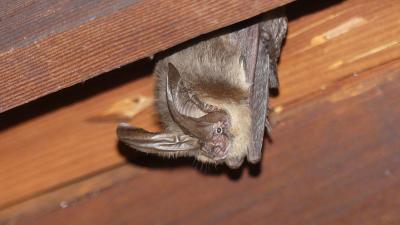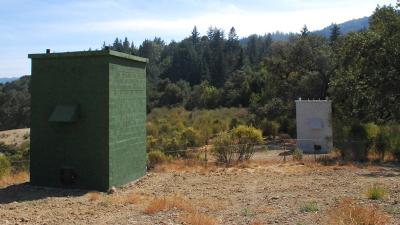Warm weather and long summer twilights make August the ideal time to scan the evening skies for bats. As the sun sets, bats emerge from their roosts, swooping and fluttering as they echolocate their prey of mosquitoes, beetles, moths and more. These amazing insectivores are vital to our ecosystems, helping to keep insect populations under control as they go about their nightly hunts.
August is the tail-end of maternity roosting season, and the height of activity for the Bay Area’s bat species. Mother bats are in a hunting frenzy as they try to find enough insects to feed themselves and their pups. This is also the time of year when bat pups are learning how to fly, joining their mothers in the air for the first time.
Colonial bat species like big brown bats (Eptesicus fuscus), Mexican free-tailed bats (Tadarida brasiliensis), Townsend’s big-eared bats (Corynorhinus townsendii) and many myotis bat species begin to form maternity colonies in late spring and early summer and will continue to roost in these colonies until the pups are weaned. These gatherings consist of pregnant bats, and after giving birth, nursing bats and their offspring. In fact, the female bats will chase male bats out of the area so that they don’t have to compete with the males for insect prey while they are trying to find enough food to feed themselves and nurse their pups.

Maternity colonies roost in places that are safe, warm and dark, such as hollowed out trees, cave-like rock structures, barns, behind peeling bark, abandoned buildings and sometimes even the attics of occupied buildings! So many little bat bodies in one enclosed space create a lot of heat, which keeps the pups warm and allows them to develop quickly.
Within the maternity colonies, female bats work together to care for the bat pups that are born throughout the summer. They trade off: some taking shifts hunting, while other females watch their pups.
Bats are very sensitive during the maternity roosting season and if they are disturbed, some species may abandon their young. In addition to protecting thousands of acres of high-quality natural bat habitat, Midpen created multiple enhanced bat habitats at Bear Creek Redwoods Open Space Preserve so that mother bats have a safe, warm place to rear their young during the summer.


